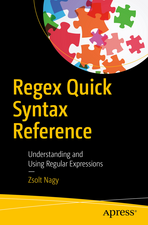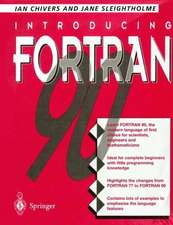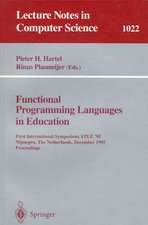Software Reading Techniques: Twenty Techniques for More Effective Software Review and Inspection
Autor Yang‐Ming Zhuen Limba Engleză Paperback – 18 noi 2016
Learn twenty software reading techniques to enhance your effectiveness in reviewing and inspecting software artifacts such as requirements specifications, designs, code files, and usability.
Software review and inspection is the best practice in software development that detects and fixes problems early. Software professionals are trained to write software but not read and analyze software written by peers. As a result, individual reading skills vary widely. Because the effectiveness of software review and inspection is highly dependent on individual reading skills, differential outcomes among software readers vary by a factor of ten. Software Reading Techniques is designed to close that gap.
What You'll Learn:
- Improve software review, inspection procedures, and reading skills
- Study traditional and modern advanced reading techniques applicable to software artifacts
- Master specific reading techniques for software requirements specification, software design, and code
Who This Book Is For:
Software professionals and software engineering students and researchers
Preț: 159.47 lei
Preț vechi: 199.34 lei
-20% Nou
Puncte Express: 239
Preț estimativ în valută:
30.51€ • 31.95$ • 25.25£
30.51€ • 31.95$ • 25.25£
Carte disponibilă
Livrare economică 15-29 martie
Preluare comenzi: 021 569.72.76
Specificații
ISBN-13: 9781484223451
ISBN-10: 1484223454
Pagini: 147
Ilustrații: XIX, 126 p. 13 illus., 10 illus. in color.
Dimensiuni: 155 x 235 x 8 mm
Greutate: 0.22 kg
Ediția:1st ed.
Editura: Apress
Colecția Apress
Locul publicării:Berkeley, CA, United States
ISBN-10: 1484223454
Pagini: 147
Ilustrații: XIX, 126 p. 13 illus., 10 illus. in color.
Dimensiuni: 155 x 235 x 8 mm
Greutate: 0.22 kg
Ediția:1st ed.
Editura: Apress
Colecția Apress
Locul publicării:Berkeley, CA, United States
Cuprins
Chapter 1. Introduction.- Chapter 2. Software Review Procedures.- Chapter 3. Basic Software Reading Techniques.- Chapter 4. Scenario‐Based Reading Techniques.- Chapter 5. Requirements Reading Techniques.- Chapter 6. Design Reading Techniques.- Chapter 7. Code Reading Techniques.- Chapter 8. Conclusion.
Recenzii
“Eight chapters cover generic software reading techniques that apply to any artifact and specific techniques that apply only to requirements, designs, or code. … The book’s primary audience is software engineering practitioners. As a practicing software developer who has been doing reviews and inspections on all sorts of material for many years, I highly recommend it to anyone interested in software reviews. It would also be an excellent source for software engineering researchers interested in quality assurance or software reviews.” (Computing Reviews, September, 2017)
Notă biografică
Yang‐Ming Zhu is Principal Scientist at Philips Healthcare, currently serving as the software architect for the Recon and Imaging Physics team for Advanced Molecular Imaging. He practices and researches image processing and software engineering with a focus on software architecture, requirements engineering, best practices, software quality, and processes. He is a senior member of IEEE and has published more than 80 book chapters and papers in such journals as IEEE Software, IEEE IT Professional, IEEE Trans Medical Imaging, IEEE Trans Image Processing, Journal of Nuclear Medicine, Physical Review Letters, Physical Review E, and Applied Physical Letters. He holds nine US patents (additional seven are pending approval), numerous professional awards, the Software Architecture Professional Certificate from the Software Engineering Institute at Carnegie Mellon University, and advanced degrees in computer science (MS from Kent State University), biomedical engineering (MS/BS from Shanghai Jiaotong University), and physics (PhD from Southeast University).
Textul de pe ultima copertă
This concise book teaches software professionals and software engineering students the full set of twenty software reading techniques to enhance their effectiveness in reviewing and inspecting software artifacts such as requirements specifications, designs, code files, and usability.
Software review and inspection is the best practice in software development whose purpose is to detect and fix problems early. Software professionals are trained to write software but not read and analyze software written by peers. As a result, individual reading skills vary widely. Because the effectiveness of software review and inspection is highly dependent on individual reading skills, differential outcomes among software readers vary by a factor of ten. Software Reading Techniques is designed to close that gap.
Dr Yang‐Ming Zhu’s depth of experience as a software architect, team leader, and scientist make him singularly well-equipped to bring software readers up to speed on all the techniques and tips for optimizing their effectiveness and efficiency, including the following:- Software review and inspection procedures and reading skills
- Traditional and modern advanced reading techniques applicable to almost all software artifacts
- Specific reading techniques for software requirements specification, software design, and code
Caracteristici
Provides traditional and modern advanced reading techniques applicable to software artifacts Teaches software review, inspection procedures, and reading skills Presents specific reading techniques for software requirements specification, software design, and code



























